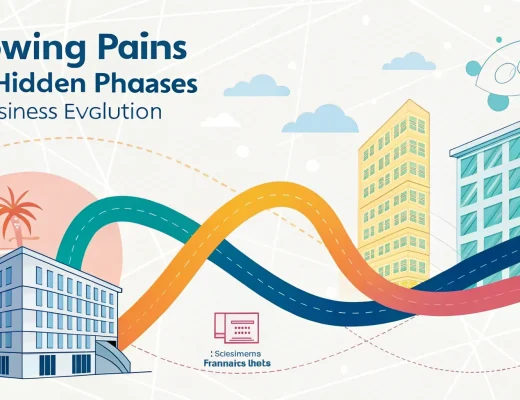Electric bills can be a bit of a mystery. You get them every month, pay them, and sometimes wonder why they change so much. Maybe you’ve asked yourself what all those charges mean. Well, you’re not alone. Many folks are puzzled by the breakdown of their electric bills. This article is here to help you make sense of it all, especially the commodity charge on your electric bill. We’ll walk you through the different parts of the bill, explain why it might vary, and give you some tips on how to manage it better.
Key Takeaways
- Electric bills consist of several components, each with its purpose.
- The commodity charge is the cost of the actual electricity you use.
- Delivery and service charges cover the cost of getting electricity to your home.
- Taxes and fees can add up, affecting your total bill.
- Understanding your bill can help you find ways to save.
Understanding Your Electric Bill
When I first got my electric bill, I felt like I was reading something in a foreign language. But don’t worry, I’ve figured it out, and I’m here to help you understand it too. Let’s break it down together.
Breaking Down the Bill Components
Your electric bill is more than just a piece of paper with a number on it. It’s a detailed utility bill that shows how much energy you used and what you’re being charged for. Here’s what you’ll typically find:
- Account Summary: This shows your previous balance, payments, and the total amount due. It’s like the big picture of your bill.
- Usage Details: This part breaks down your energy usage. You’ll see how much electricity you used in kilowatt-hours (kWh) and sometimes even a comparison with the previous month.
- Charges: Here, you’ll find the costs broken down into different categories like supply charges, delivery charges, and taxes.
Why Your Bill Varies Each Month
Ever wonder why your bill changes from month to month? It’s not just about how much electricity you use. Seasonal changes, like using more air conditioning in the summer or heating in the winter, can make a big difference. Plus, if your utility company changes their rates, that can affect your bill too.
How to Read Your Electric Bill
Reading your electric bill doesn’t have to be a headache. Start by looking at your account summary to understand what you owe. Then, check out your usage details to see how much energy you’ve used. Finally, review the charges to understand what you’re paying for. If something seems off, don’t hesitate to contact your utility company for clarification. They can help explain any confusing parts.
Understanding your electric bill can seem tricky at first, but once you get the hang of it, it’s pretty straightforward. Just take it step by step, and you’ll be a pro in no time!
What is the Commodity Charge on Electric Bill?
Understanding the different charges on your electric bill can be a bit confusing, but I’m here to break it down for you. One of the key components you’ll see is the commodity charge. This is basically the cost of the electricity you actually use.
Definition of Commodity Charge
The commodity charge is the part of your bill that covers the electricity you consume. It’s like when you go grocery shopping—the more you buy, the more you pay. Similarly, the more electricity you use, the higher this charge will be. It’s typically measured in kilowatt-hours (kWh), which is just a fancy way of saying how much power you’re using over time.
How Commodity Charges are Calculated
Calculating these charges is straightforward. The electricity provider sets a rate per kWh, and this rate is multiplied by the amount of electricity you use in a billing period. For example, if the rate is 10 cents per kWh and you use 500 kWh in a month, your commodity charge would be $50.
Here’s a simple breakdown:
- Electricity Rate: Cost per kWh set by the provider.
- Usage: Total kWh consumed during the billing cycle.
- Total Commodity Charge: Electricity Rate x Usage.
Impact of Commodity Charges on Your Bill
Commodity charges can significantly impact your bill, especially if your usage varies. If you crank up the AC in the summer or use electric heaters in the winter, you’ll likely see these charges spike. It’s important to be mindful of your energy habits to manage these costs.
By understanding these charges, you can better anticipate your bill and make informed decisions about your energy use. Remember, reducing your consumption can help lower your bill, so keep an eye on those energy-hogging appliances!
Decoding Delivery and Service Charges
When I first started paying my own electric bills, I was stumped by all the different charges. I mean, why can’t it just be one simple number? But, as I dug into it, I realized it’s not just about the electricity I use. Delivery and service charges are a big part of the bill, and understanding them can really help you manage your costs.
Understanding Delivery Charges
Delivery charges are all about getting the electricity from the power plant to your home. Think of it like ordering a pizza. You pay for the pizza itself, but there’s also a delivery fee to get it to your door. The same goes for electricity. These charges cover the maintenance of the power lines and the infrastructure needed to keep everything running smoothly. Without these, we’d all be in the dark.
What Are Service Charges?
Service charges, on the other hand, are like a subscription fee. These are the costs associated with keeping your electric service active. It’s a bit like paying for a membership. Whether you use a lot of electricity or just a little, this fee makes sure the service is always available when you need it.
Differences Between Delivery and Commodity Charges
Now, you might wonder, what’s the difference between delivery and commodity charges? While delivery charges are about getting power to you, commodity charges are about the electricity itself. It’s like the difference between paying for a ride and paying for the gas. Both are important, but they cover different parts of the journey.
So, the next time you open your electric bill, take a closer look at these charges. Understanding them can help you see where your money is going and maybe even find ways to save a little. And if you’re ever confused, don’t hesitate to reach out to customer care for some help. They can explain all these details and make sure you know exactly what you’re paying for.
Taxes and Fees on Your Electric Bill
Let’s face it, nobody likes to see extra charges on their electric bill, but understanding them can help ease the pain a bit. Here’s a breakdown of what you might see:
Common Taxes on Electric Bills
Every time I open my electric bill, I notice a section dedicated to taxes. These taxes can include state and local taxes, and sometimes even special district taxes. These taxes are usually a percentage of your total bill, so the more energy you use, the higher the tax. It’s like when you buy a more expensive item at the store—you end up paying more in sales tax.
Understanding Additional Fees
Besides taxes, there are often other fees. These can be service fees, environmental fees, or regulatory fees. These fees are usually set by your utility company and can vary widely depending on where you live. I remember once being confused by a "renewable energy fee" on my bill. Turns out, it was a small charge to support green energy initiatives in my area.
How Taxes and Fees Affect Your Total Bill
It’s important to know that these taxes and fees can add up. They might seem small individually, but together they can make a noticeable dent in your wallet. For example, if you’re like the average US residential customer using 855 kilowatt-hours a month, these extra charges can really stack up. So, next time you look at your bill, take a moment to see how much of it is actually going towards taxes and fees. It might surprise you!
Understanding these charges can help you budget better and maybe even find ways to reduce your overall energy use. That’s always a win in my book!
Tips for Managing Your Electric Bill
Ways to Reduce Your Electric Bill
Okay, so let’s talk about saving some cash on that electric bill. Who doesn’t want to save money, right? First off, make sure you’re turning off lights when you leave a room. I know it sounds like a no-brainer, but you’d be surprised how often we forget. Also, consider swapping out those old light bulbs for LED ones. They’re a bit more expensive upfront, but they last longer and use way less energy.
Another tip is to unplug devices when they’re not in use. Things like chargers and TVs still use power even when they’re off. It’s called "phantom load," and it can really add up over time.
Understanding Energy Efficiency
Energy efficiency is all about using less energy to do the same tasks. It’s like when you switch from driving a gas-guzzler to a hybrid car. You’re still getting from point A to B, but you’re using less fuel. In your home, this might mean investing in energy-efficient appliances. Look for the Energy Star label when you’re shopping for new stuff. These appliances might cost more initially, but they’ll save you money in the long run.
Also, think about your heating and cooling systems. Keeping them well-maintained can help them run more efficiently. And don’t forget about insulation! Proper insulation keeps your home warm in the winter and cool in the summer, reducing the need for heating and cooling.
How to Dispute a Charge on Your Bill
Have you ever opened your electric bill and thought, "Whoa, that’s way higher than usual!"? If something seems off, don’t just shrug it off. You have the right to question it. Here’s what you can do:
- Review Your Bill: Make sure you understand all the charges. Sometimes, it’s just a seasonal spike or a one-time fee.
- Contact Your Provider: Call or email your electric company. Be polite but firm. Explain the issue and ask for clarification.
- Provide Evidence: If you have past bills that show a pattern, use them to support your case.
- File a Formal Dispute: If you’re not getting anywhere, you might need to file a formal complaint. Check your provider’s website for the process.
Remember, it’s your money, and you deserve to know exactly what you’re paying for. Managing your electric bill isn’t just about cutting costs—it’s also about understanding where your money goes and making sure you’re not overcharged.
The Role of Seasonal Changes in Your Electric Bill
How Weather Affects Your Usage
You ever notice how your electric bill seems to have a mind of its own, especially when the seasons change? Weather plays a huge role in how much electricity you use. In the summer, when it’s blazing hot, you probably have your air conditioner cranked up. And in the winter, you’re likely running the heater all the time. These changes in weather mean your heating and cooling systems are working overtime, and that can really make your electric bill skyrocket.
Preparing for Seasonal Bill Fluctuations
I’ve learned the hard way that if you don’t plan ahead, those seasonal changes can catch you off guard. Here are a few things I try to do:
- Adjust the thermostat: I try to keep it set a bit higher in the summer and lower in the winter. Adjusting your thermostat by just a few degrees can save a lot on your bill.
- Seal up the house: Drafty windows and doors let the outside air mess with your indoor climate. I use weather stripping and caulk to seal those gaps.
- Use fans and layers: In the summer, ceiling fans help circulate the cool air, and in the winter, wearing layers means I don’t need the heater as much.
Energy Saving Tips for Different Seasons
Every season has its own tricks for saving energy. In the spring and fall, when the weather is mild, I try to take advantage of natural light and keep the windows open for a breeze. During the summer, it’s all about keeping the blinds closed during the hottest part of the day to keep the heat out. And in the winter, I make sure to let the sun in during the day to naturally warm up the house.
Keeping an eye on these seasonal changes and adjusting your habits can really help keep your electric bill in check. It’s all about being a bit smart and proactive with how you use your energy.
Understanding Renewable Energy Charges
What Are Renewable Energy Charges?
So, you’ve probably seen that line on your electric bill that mentions renewable energy charges and wondered, "What on earth is that?" Well, you’re not alone. Renewable energy charges are fees included in your bill to support the development and integration of renewable energy sources, like wind and solar, into the power grid. It’s kind of like pitching in to help make our energy cleaner and more sustainable. You know, like when everyone chips in to buy a birthday gift for a friend.
Impact of Renewable Energy on Your Bill
Now, how does this affect your wallet? These charges can vary, depending on where you live and how much renewable energy your utility company uses. Sometimes, it might feel like an extra burden, but think of it as an investment in a cleaner future. Plus, as more renewable energy gets added to the grid, the costs might actually go down over time. It’s like buying a more fuel-efficient car; there’s an upfront cost, but the savings on gas make it worth it.
Benefits of Supporting Renewable Energy
Supporting renewable energy has its perks, too. For one, it helps reduce our dependence on fossil fuels, which is a big win for the environment. Plus, when you support renewable energy, you’re also supporting jobs in the green energy sector. And let’s not forget about the feed-in-tariff scheme, which can be a financial benefit if you own a renewable energy system. It’s a win-win situation where you contribute to a cleaner planet and potentially save some money down the line. So, next time you see that charge on your bill, remember, you’re doing your part to support a brighter, greener future.
Frequently Asked Questions
What makes my electric bill go up and down each month?
Your electric bill can change every month because of how much energy you use. Using more lights, heating, or cooling can make your bill higher. Also, rates might change, or there could be extra fees.
How do I figure out what each part of my electric bill means?
Your electric bill has different parts like commodity charges, delivery charges, and taxes. Commodity charges are for the energy you use. Delivery charges are for bringing the energy to your home. Taxes are extra costs added by the government.
What are commodity charges on my electric bill?
Commodity charges are what you pay for the actual energy you use in your home. This cost can change based on how much energy you use and the rate set by your energy provider.
Why do I have to pay delivery and service charges?
Delivery and service charges are fees for getting the energy to your home and maintaining the equipment that does this. It’s like paying for the roads that bring energy to your house.
Can I lower my electric bill?
Yes, you can lower your electric bill by using energy-saving appliances, turning off lights when not needed, and keeping your heating and cooling at a steady temperature. Also, checking for any leaks or drafts in your home can help.
What should I do if I think my electric bill is wrong?
If you think your bill is incorrect, you should contact your energy provider to check it. They can help you understand the charges and fix any mistakes.







